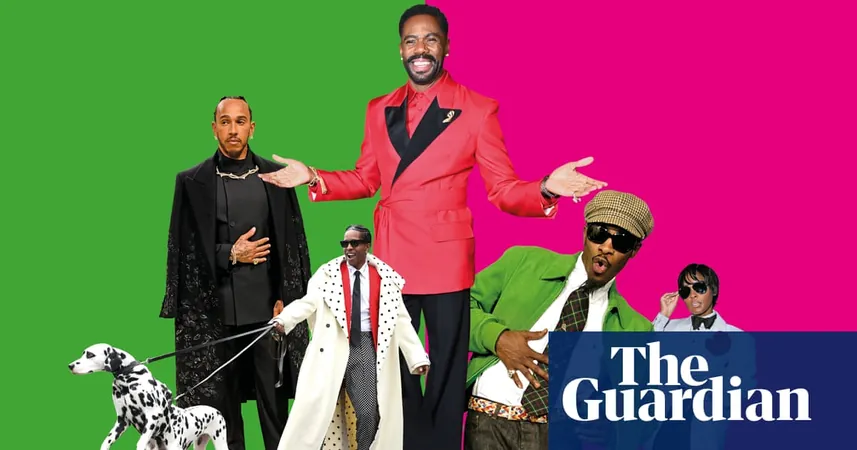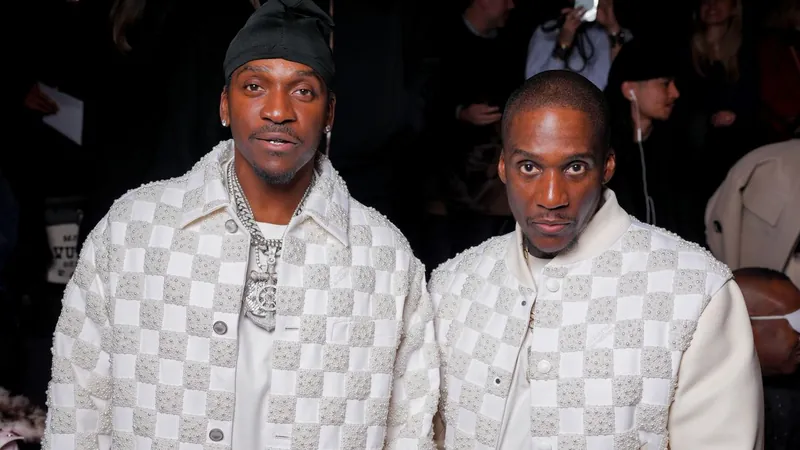
Unlocking the Glamour: How the Met Gala is Highlighting Black Dandyism
2025-04-30
Author: Wai
A Rising Star in Dandyism
After years of grinding as an actor, Colman Domingo has catapulted into the Hollywood A-list, thanks in part to his riveting portrayal of civil rights icon Bayard Rustin in the biopic 'Rustin'. But it's not just his talent that's turning heads; it's his electrifying embrace of Black dandyism that sets him apart.
A Style Statement on the Red Carpet
Domingo has perfected his signature look—tight trousers and flowing shirts that he initially donned while working as a waiter in San Francisco. On the red carpet, he dazzles in unique ensembles featuring Nehru collars, bow ties, and eye-catching cloaks. As he succinctly puts it, 'I don’t just wear clothes, I wear stories.' His black Valentino tuxedo at the Golden Globes, paired with a polka-dot shirt and a striking peacock plume brooch, spoke volumes about the theatrical nature of awards season.
Honoring a Cultural Legacy at the Met Gala
As the co-chair of this year's Met Gala—titled 'Superfine: Tailoring Black Style'—Domingo epitomizes the celebration of Black dandyism. Inspired by Monica L. Miller's work 'Slaves to Fashion: Black Dandyism and the Styling of Black Diasporic Identity', this year's theme honors the historical and political significance of fashion among Black men, tracing its evolution from the era of slavery to the influential styles of contemporary icons like André 3000 and Janelle Monáe.
The Depth of Dandyism
Miller explains that dandyism transcends mere fashion; it's about crafting a narrative that resonates with historical and political ideologies while showcasing individuality. The term 'superfine' draws from Olaudah Equiano, an enslaved West African, who recounted spending his newfound freedom on a flamboyant suit. This idea captures both the beauty and struggle inherent in Black dandy style.
A Moment of Reflection and Change
This year’s gala comes at an incredibly political time. According to Miller, Black culture and designers have increasingly shaped the narrative within Western fashion over the past 15 years. The exhibition aims to shine a light on the significant strides made by Black designers, illustrating how dandyism offers a lens on issues like identity, race, and power.
Challenging Social Norms Through Style
Miller's journey into the world of Black dandyism began during her academic pursuits. Inspired by WEB Du Bois and the complexities of being depicted as a dandy, she uncovered the subversive potential of this style. What was once used to scorn became a means of resistance and self-assertion.
Profound Symbols of Resistance
The exhibition explores themes central to Black dandyism, particularly the concept of 'ownership'—the tension between being commodified and reclaiming that identity. This idea resonates through examples like Josephine Baker, who skillfully navigated her public persona to forge her own narrative.
Modern Influences and Expressions
Throughout the 20th century, Black dandyism evolved, reflecting nuanced discussions around race, masculinity, and sexuality. Dandyism diverges sharply from its European counterpart, with Miller provocatively asserting that Black identities have always been multifaceted, challenging mainstream narratives.
The Feminist Lens of Dandy Aesthetics
Black women significantly shaped dandyism too, as seen in figures like Gladys Bentley and Grace Jones. Modern political leaders such as Kamala Harris and Michelle Obama continue to embody these aesthetics, fostering connections with their communities while championing Black designers.
A Call to Appreciate and Engage
As the Met Gala approaches, Miller hopes attendees will grasp the profound historical implications of Black dandyism. With each carefully chosen outfit, figures like Domingo and A$AP Rocky will transform the red carpet into a powerful statement about visibility, identity, and the ongoing journey toward dignity and representation in America and beyond.



 Brasil (PT)
Brasil (PT)
 Canada (EN)
Canada (EN)
 Chile (ES)
Chile (ES)
 Česko (CS)
Česko (CS)
 대한민국 (KO)
대한민국 (KO)
 España (ES)
España (ES)
 France (FR)
France (FR)
 Hong Kong (EN)
Hong Kong (EN)
 Italia (IT)
Italia (IT)
 日本 (JA)
日本 (JA)
 Magyarország (HU)
Magyarország (HU)
 Norge (NO)
Norge (NO)
 Polska (PL)
Polska (PL)
 Schweiz (DE)
Schweiz (DE)
 Singapore (EN)
Singapore (EN)
 Sverige (SV)
Sverige (SV)
 Suomi (FI)
Suomi (FI)
 Türkiye (TR)
Türkiye (TR)
 الإمارات العربية المتحدة (AR)
الإمارات العربية المتحدة (AR)